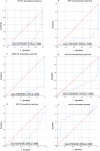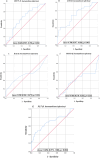Prevalence and Hematological Changes in Urogenital Schistosomiasis: Infection Persistence in the Phase of Mass Drug Administration in Sempoa (Kwahu East, Ghana): A Cross-Sectional Study
- PMID: 39897461
- PMCID: PMC11779747
- DOI: 10.1002/hsr2.70404
Prevalence and Hematological Changes in Urogenital Schistosomiasis: Infection Persistence in the Phase of Mass Drug Administration in Sempoa (Kwahu East, Ghana): A Cross-Sectional Study
Abstract
Background: Schistosomiasis is a chronic neglected tropical disease and Ghana's second most prevalent helminth infection. The annual mass drug administration of praziquantel to school children is aimed at reducing disease morbidity as a public health problem.
Aim: The study aimed to assess the prevalence and hematological profile of urinary schistosomiasis in Sempoa after over a decade of consecutive Mass Drug Administration (MDA) of praziquantel.
Methods: A community-based cross-sectional study involving 126 participants was conducted. Schistosoma haematobium eggs were identified and quantified using the urine filtration-microscopy technique. The hematological profile was analyzed using a fully automated 5-part Sysmex XN-350 (Sysmex Co, Germany) analyzer.
Results: The study recorded a prevalence of 21.6% that was significantly related to water contact activities. Schistosomiasis was significantly associated with lower levels of Red Blood Cell (RBC) indices; MCV (p < 0.001), MCHC (p < 0.001), and MCH (p = 0.01) with higher platelet, lymphocytes, and basophil counts compared to the uninfected. Heavy infection was significantly associated with lower hemoglobin levels. The study further reported microhaematuria as a sensitive and specific proxy diagnostic tool for field surveillance in endemic communities.
Conclusion: Urinary schistosomiasis accompanied by an altered hematological profile persists in Sempoa under preventive praziquantel. Future control interventions must consider an integrated approach of marrying behavioral change, with preventive chemotherapy and vector control.
Keywords: hematological profile; hematuria; risk factors; urogenital schistosomiasis.
© 2025 The Author(s). Health Science Reports published by Wiley Periodicals LLC.
Conflict of interest statement
The authors declare no conflicts of Interest.
Figures



Similar articles
-
Urogenital schistosomiasis prevalence, knowledge, practices and compliance to MDA among school-age children in an endemic district, southern East Tanzania.Parasite Epidemiol Control. 2022 Jul 2;18:e00257. doi: 10.1016/j.parepi.2022.e00257. eCollection 2022 Aug. Parasite Epidemiol Control. 2022. PMID: 35832870 Free PMC article.
-
Urogenital schistosomiasis among pre-school and school aged children in four districts of north western Tanzania after 15 years of mass drug administration: Geographical prevalence, risk factors and performance of haematuria reagent strips.PLoS Negl Trop Dis. 2022 Oct 12;16(10):e0010834. doi: 10.1371/journal.pntd.0010834. eCollection 2022 Oct. PLoS Negl Trop Dis. 2022. PMID: 36223393 Free PMC article.
-
Urogenital schistosomiasis among school children in northwestern Tanzania: Prevalence, intensity of infection, associated factors, and pattern of urinary tract morbidities.Parasite Epidemiol Control. 2024 Sep 7;27:e00380. doi: 10.1016/j.parepi.2024.e00380. eCollection 2024 Nov. Parasite Epidemiol Control. 2024. PMID: 39310329 Free PMC article.
-
Ultrasound aspects and risk factors associated with urogenital schistosomiasis among primary school children in Mali.Infect Dis Poverty. 2023 Apr 20;12(1):40. doi: 10.1186/s40249-023-01071-6. Infect Dis Poverty. 2023. PMID: 37081494 Free PMC article.
-
Review of Recent Prevalence of Urogenital Schistosomiasis in Sub-Saharan Africa and Diagnostic Challenges in the Field Setting.Life (Basel). 2023 Jul 31;13(8):1670. doi: 10.3390/life13081670. Life (Basel). 2023. PMID: 37629527 Free PMC article. Review.
References
-
- World Health Organization , accessed 16 July 2020. https://www.who.int/health-topics/schistosomiasis.
-
- Fenwick A., Webster J. P., Bosque‐Oliva E., et al., “The Schistosomiasis Control Initiative (SCI): Rationale, Development, and Implementation From 2002–2008,” Parasitology 136, no. 13 (2009): 1719–1730. - PubMed
-
- World Health Organization , Schistosomiasis Progress Report 2001–2011 and Strategic Plan 2012–2020 (Geneva: World Health Organization, 2013). 80.
LinkOut - more resources
Full Text Sources

